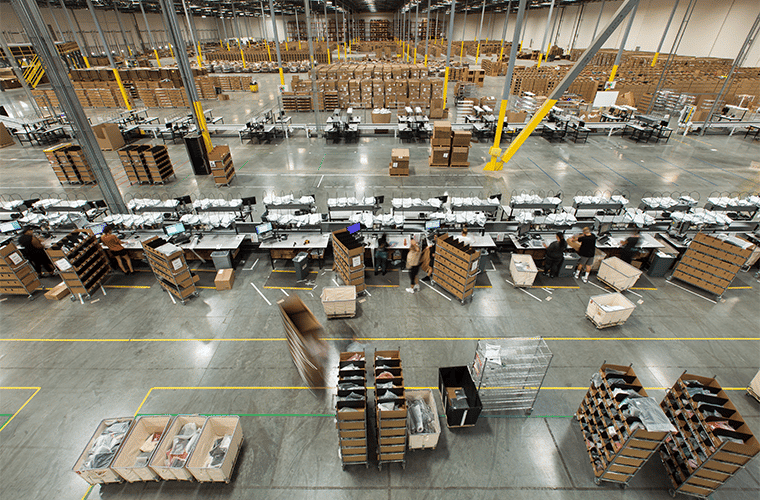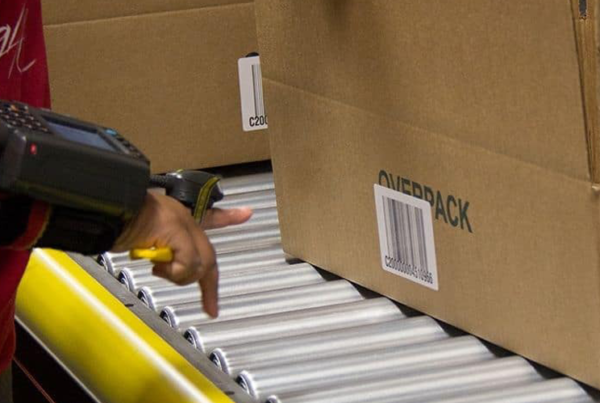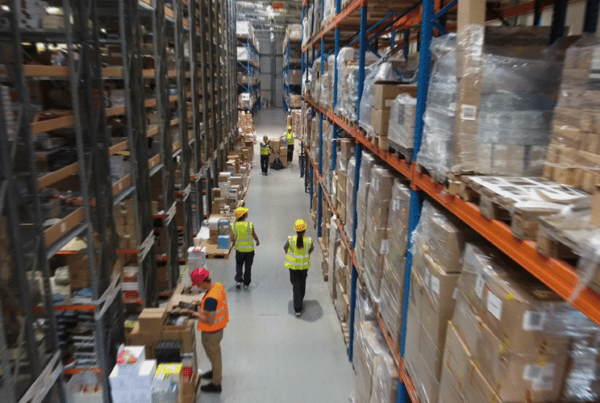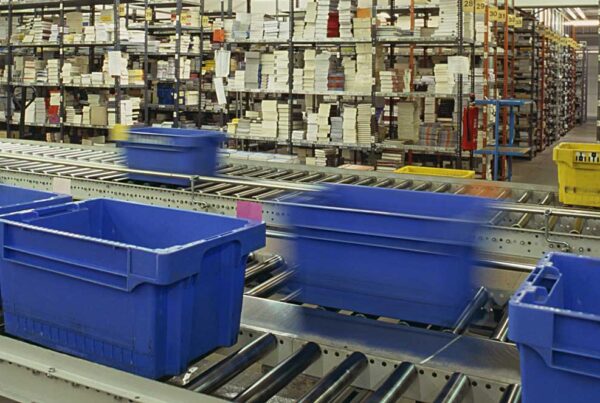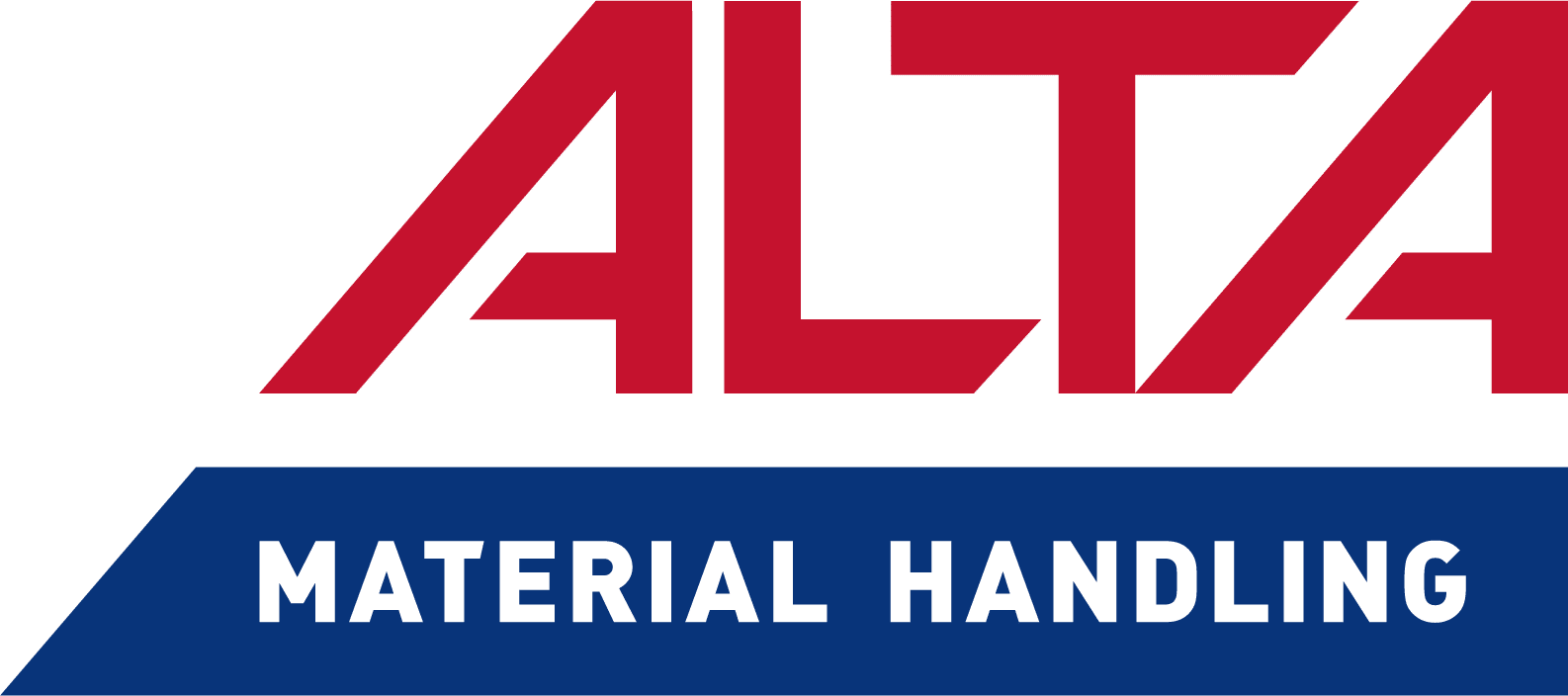The demands of ecommerce – coupled with the increased need for more resilient supply chains – are forcing warehouses to work at, or even beyond, their current capacity.
The good news – if we can call it that – is that most warehouses are currently inefficient and can take relatively simple, cost-effective steps to improve their workflows and throughputs.
At PeakLogix, we have decades of experience helping businesses like yours increase their capacity and throughput without adding to their footprint. In this article, we cover eight essential areas to look at and offer actionable advice on improving efficiency.
While the times we are living in – with pandemics and the dramatic rise of ecommerce – are unprecedented, many of the solutions to warehouse bottlenecks, lost inventory, and inefficiencies haven’t changed.
1. Technology
In today’s market, new technologies are being continuously developed that target nearly every need of a warehouse. Because many of these technologies – such as Warehouse Management Systems (WMSs) or goods-to-person picking automation – can affect nearly every aspect of your facility, you’ll want to ensure that they address your needs in the most effective way possible.
Smaller operations that still use paper picking can benefit from making some of the analog changes to their facility that we discuss below. These include ensuring that their receiving department is well laid out, that items are put away using ABC analysis, and that the facility is marked so that employees can navigate easily.
To help a facility grow increasingly efficient, a good first digital step is a Warehouse Management System (WMS). Coupled with RFID tags and scanners, inventory can be tracked throughout the supply chain, virtually eliminating lost items. At the same time, to maximize efficiency, a robust WMS can route movement throughout the warehouse and even dictate where goods should be stored.
Automated print-and-apply labels are also a great early step in the move toward digitalization. Correctly applying labels to boxes ensures movement throughout the warehouse and all the way to the end user. Damaged or misapplied labels can result in goods not reaching their destination, which affects customer retention rates.
As your facility continues its advance toward digitalization, you can scale up to pick-to-light and pick-to-voice. These are easy-to-use automated solutions with minimal learning curves and proven records of increasing throughput, accuracy, and other key metrics.
For facilities that are already running multiple shifts a day, 5-7 days/week, moving to goods-to-person automated solutions is the ultimate step. Depending on the industry and the facility, Automated Guided Vehicles (AGVs), carousels, Vertical Lift Modules (VLMs), and automated conveyor systems are all viable options for maximizing a facility’s capacity and throughput.
2. Warehouse Layout
An average US warehouse pays for nearly 7 weeks of wasted motion each year, according to the U.S. Census Bureau. This includes everything from the seconds it takes constantly moving between a workstation and a printer to the minutes it can take to walk through a poorly laid out facility.
One of the simplest ways to maximize warehouse efficiency is to ensure that workers have the items they need at-hand, and that their tools are as easy to use as possible. Having carts with portable computers and printers, or even upgrading to heads-up displays, can eliminate the small back-and-forth motions that add up to lost productivity.
Once the workspaces have been addressed, establish zones throughout the warehouse, grouping items according to a few criteria.
- Temperature-sensitive items must be stored in the right zones, and the area should be laid out so that getting in and out of the zones, and properly rotating stock, can be done easily.
- High-volume items should be stored close to the front of the warehouse, or even kept in the shipping and receiving department for cross docking.
- Store heavy or bulky items that require reinforced shelves or racking in the same area. This can reduce the cost of spreading more expensive infrastructure throughout the facility.
- Store small items in appropriately sized shelves. This maximizes the use of your vertical space, and also allows you to move racking and shelves in this area closer together. Larger items can require more space to move in and out of storage, and a floorplan that takes this into account can help maximize your footprint.
- Store items that frequently move together near each other, or along the same travel path. This will reduce travel time and increase pick rates.
A properly laid out floor plan increases throughput by creating more efficient replenishment and pick paths. It limits dead-end aisles, backtracking, redundancies, and unnecessary maneuvering of forklifts and other vehicles.
It can also affect safety by ensuring that pallets aren’t improperly stacked with, for example, heavy items on top of unstable bases.
3. Storage
Along with the layout, you’ll want to ensure that your storage is optimized for your needs. The right storage solutions for your use and space correlate directly with warehouse efficiency, and can prevent the need to expand a facility’s footprint.
Maximizing the space you have includes proper distance between racking, as well moving into the vertical space. This might mean installing simple static racking, shelves, and mezzanines. Or, it could include more complicated systems that maximize storage density like vertical lift modules or even Automated Storage and Retrieval Systems (AS/RSs).
Static racking, combined with automated guided forklifts, are proving to be one of the most cost-effective ways to boost warehouse productivity.
Your inventory management should include the tracking and control of obsolete inventory, which might account for as much as 30% of your on-hands. By eliminating this, you can create flex space for buffer inventory or to handle sudden fluctuations in demand.
After the supply chain disruptions caused by COVID-19, lean storage is still a best practice. However, what it means for a facility to be lean has changed to improve supply chain resiliency. You’ll want to balance a Just-In-Time (JIT) inventory model with on-hands of safety stock for key items.
4. Navigational Aids
As you work to maximize your layout, consider how different zones are labeled, as well as the landmarks operators will use to navigate through the warehouse. This will help further eliminate backtracking and other wasted motion.
Low-tech labels for zones can include color-coded floor paint and shelves so that operators know at a glance what zone they’re in. It can include signage on racks and shelves that’s either painted on or affixed with magnets. And pathways to popular items or zones can be marked for operators to follow.
Higher-tech solutions rely on a WMS that allows for pick-to-light and pick-to-voice solutions within zones. For example, as a tote enters a zone with pick-to-light, the operator will scan the order’s barcode. Indicators installed on the racking or shelves will light up telling the operator exactly where to go and how much to pick.
Instead of an operator reading and re-reading a clipboard or RF terminal, and possibly moving back and forth in their zone hunting for pick faces, they can move through their zone picking the right quantity efficiently in a single pass. And because these are hands-free technologies, they help reduce wasted motion even when picking large or bulky items.
Pick-to-voice solutions are a hands-free, eyes-free solution. Operators wear a headset and – in plain, easily understood language – the WMS indicates what needs to be picked and where, directing the operator along the optimal route. Operators can also interact with the system by speaking into a microphone. That their eyes are free means they’re safer in high traffic situations, and improves the productivity of forklift operators.
Both pick-to-light and pick-to-voice technologies are popular for the increase in throughput and accuracy they deliver, as well as for their ease-of-use.
5. Operations
One of the most effective ways to improve warehouse efficiency is to streamline your operations. But what that means for you depends on your current operations, and your goals.
Facility layouts and workstations should be organized to minimize wasted movement.
In an average warehouse, picking and packing are the most labor- and time-intensive processes. Especially in person-to-goods picking processes, operators need to be able to travel routes that minimize their distance traveled, and they should pick in batches, waves, or directly into shipping containers.
If you aren’t relying on your WMS to maximize the use of your space and picking routes, a simple solution for lower throughput facilities is to run an ABC analysis. This will categorize your inventory according to throughput, and items should be stored so that the most frequently picked are the most easily accessed.
Depending on your facility, even with robust inventory tracking and a WMS, an ABC storage model might be right for you. But WMSs allow for tighter control of inventory management and route planning, to the point that some facilities are storing goods in seemingly random locations in order to maximize their use of storage space and minimize travel time.
Higher throughput facilities – and even high throughput zones – benefit most from automated systems. A large facility planning for growth might start by automating a single zone that incorporates a Vertical Lift Module. Or, an entire warehouse might rely on a fleet of AGVs for replenishment.
Given the range of options on the market today, pairing the right automated solution to your needs takes a knowledgeable integrator who can think outside the box.
6. Receiving and Replenishment
An efficient receiving department sets the stage for a successful warehouse. Receiving needs to be able to bring items in reliably, account for them, label them accurately for replenishment, and get delivery trucks away from the dock and back on the road.
Proper inventory control begins with receiving. A single miscounted or mislabeled delivery can lead to hours of people walking the floor looking for an item that never came through the door, or was put away in the wrong zone.
The same technologies that help replenishment and picking can also help receiving. Handheld scanners and portable printers, automated print-and-apply labelers, or RFID technology can all improve the accuracy of a receiving department, and help create a smooth transition of ownership in a way that will positively feed back into a facility’s overall processes.
Ensuring the area is laid out to properly handle the receiving volume is critical to ensuring an efficient receiving process. Operators need the space to load and unload trucks – which means goods need to be processed quickly so they don’t sit in the way.
Consider the number of times goods are touched. If you have a few fast-moving items, create flex space so they can be staged for cross-docking.
If you know goods can move straight to their pick location, replenish them from the receiving department instead of staging them in a bulk storage area.
Have a system in place that relies on advanced shipping notifications instead of regular schedules. “Regular” deliveries are too often delayed, or the delivery isn’t what was expected. This can result in inefficient use of manpower, as people are either overwhelmed at the quantity received or left standing on the dock with nothing to do.
With advanced shipping notifications, you’ll better know when deliveries are scheduled, how to properly staff for them, and how to space your deliveries apart so that you have enough time between deliveries and shipments.
Vendor appointments can be streamlined by having digital documentation sent before the vendor arrives. This way, you can avoid surprises and maximize your planning.
Finally, have detailed plans for how to handle returns, if applicable. According to The Wall Street Journal, roughly 18% of goods bought online are returned, totaling nearly a hundred billion dollars worth of merchandise each year. Much of this will either end up in a landfill or be baled and sold by weight.
Knowing what to do with returns will, at a minimum, speed up your receiving process. In a best-case scenario, your facility will have defined which items are worth recovering, which need to be written off, and how to handle them efficiently.
7. Incentives
Studies show that incentive packages work across many areas of a facility. However, creating an incentive plan that works, without encouraging risky or unethical behavior, can be tricky.
Incentives can be created that try to improve safety, that encourage out-of-the-box thinking, and that promote sales and productivity. And studies show that incentives can attract and keep high-quality employees.
Incentives based on quotas that run for long periods, but that pay out at frequent intervals, seem to do best. For example, an incentive program might look at pick rates, run continuously, and pay out every quarter.
However, a well-designed incentive program should be created to avoid unethical or unsafe behavior, as well as the appearance of favoritism.
If there are departments that can’t practically participate in some form of incentive program – personnel and maintenance, for example – their morale will likely suffer if they see their peers profiting unequally.
At the same time, a poorly structured incentive can lead to people cutting corners or even cheating in order to earn a bonus. Paperwork can be forged and sales can be claimed by the wrong person. Workers can skip breaks and ignore safety concerns in order to keep an unrealistic pace.
All of these can undermine the very purpose of the incentive program, and all care should be taken to avoid these situations.
8. Continuously Improve
Increasing a warehouse’s efficiency is a process of continuous improvement. The efficiencies gained today lead to growth that can create both bottlenecks and opportunities. These bottlenecks can be cleared, and opportunities leveraged, by returning to the process of creatively looking for solutions that improve your operations.
Want to learn more about scaling your business operations? Contact us to talk details and strategies.
2x the volume and $100K in savings.
PeakLogix helped Merit Medical double volume and increase productivity by 200% while maintaining staffing levels reducing overtime.

